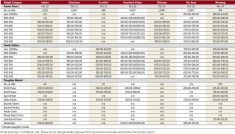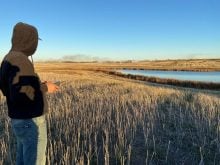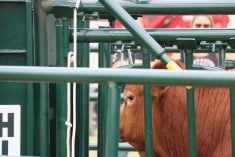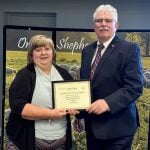Spring doesn’t seem to be getting any closer for the beleaguered cattle sector.
Feed supply was already tight a month ago, groups like the Manitoba Beef Producers (MBP) had reported. Farmers wondered how long they would be able to keep cattle back from pasture — pasture in dire need of a strong start without the stress of grazing thanks to last year’s drought.
A string of late snowstorms in the last 2-1/2 weeks of April have since tightened supplies to vise-like proportions.
Read Also
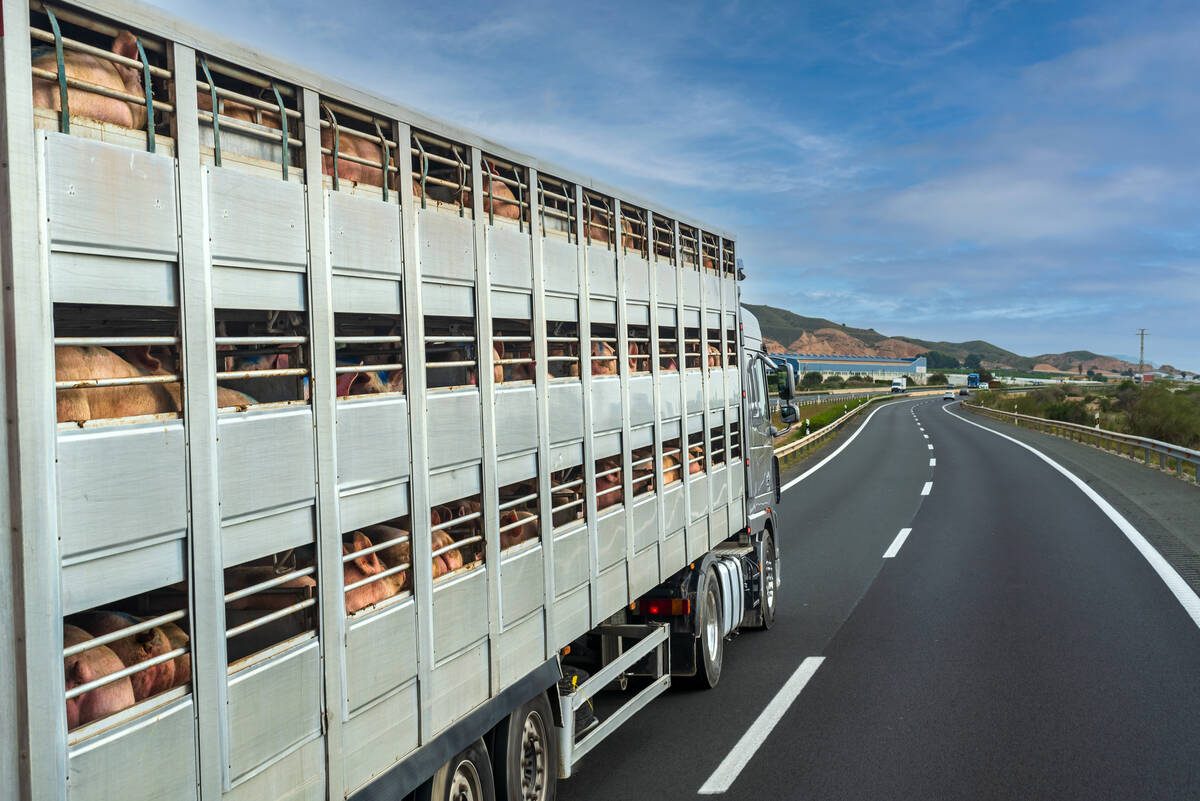
Pig shipments to U.S. slow as new COOL looms
A Manitoba pork marketer says some U.S. processors have shut their doors to Canadian pigs as enforcement of U.S. voluntary country of origin labelling (vCOOL) looms.
“I’m typically not that cynical guy, but what we’re seeing is feed requirements just be added with all of these weather events that require more feed or more straw to make it workable through the snow events and rain,” MBP president Tyler Fulton said. “It’s really leaving guys short.”
Why it matters: A harsh winter had already strained feed supplies, and now it looks like it doesn’t want to let go.
Winter was back in full force in the last half of April, just as many commercial herds started calving.
An April 13-14 blizzard dropped well over 30 centimetres (cm) — and in some cases, over half a metre — of snow in places, according to community weather monitor CoCoRaHs. That was compounded by strong winds the following day, leading to significant drifting. A further system April 17 added several more centimetres.
Meteorologists further warned producers to expect another blast of winter in the last weekend of April. Weather warnings once again blanketed southern Manitoba going into the weekend, with residents told to brace for heavy rain and snow between April 22-25.
John McGregor, extension support with the Manitoba Forage and Grassland Association (MFGA), said that, while feed prices remain high, there has not been evidence of last-minute price gouging.
Some forage has come on the market as sellers clear out their sheds, he said. Prices remain similar to the MFGA’s March report, which reported dairy hay averaging 15 to 16.5 cents a pound and alfalfa grass sitting at eight to 12.5 cents a pound for beef and 10 to 14 cents a pound for good-quality hay.
Straw, of concern to producers in the heat of calving, ranged from 4.25 to 4.5 cents a pound in March.
Consistently high feed prices have contributed to producer woes this winter, although many worst-hit drought areas from last year have reported significant uptake of AgriRecovery aid programs.
Fulton, who sold some of his own hay, says he has seen a return of demand. Customers “purchased from us, thinking that it was enough to get them through, and now they’re all calling back saying, ‘Do you have more? Because I need more to make it to when the grass is going to come,’” he said. “I think it’s a really common theme.”
Calving
Calving in mud and snow is no one’s idea of a good time, but they’re the conditions in which Matthew Atkinson, who farms in the foothills of Riding Mountain National Park, now faces.
“The majority of my fields, when the weather picked up here, I couldn’t get across them with a front-wheel assist, because it was too deep,” he said. “In my yard, the deeper end of my drifts was nearing six feet. It was a pretty significant snowfall.”

Atkinson had just started his calving season when the first round of storms hit in mid-April. The following cold and wet, however, have required extra effort and vigilance to catch calves early and make sure young cows are not dropping calves where they shouldn’t.
“By definition,” he said, his operation is not the type to have extensive indoor calving capacity.
“We’re trying to do it in what we find is the most economical method,” he said. “As a young producer, I can’t build a $100,000 calving facility and calve my cows in it.”
Ranchers who run large herds also typically rely on warmer weather and calve this time of year, as they don’t have the calving facility to match their herd size, he noted.
Fulton echoed Atkinson. He did not hear of any issues with producers unable to reach their cattle during the storms, he said, but weather required farmers to put in prodigious effort checking and sheltering cattle to avoid calving loss.
Producers now must face the tax on mental health and the difficulty — as well as animal health issues — of calving in the wet and cold, he said.
“Right now, it’s a struggle to calve on grass, because there’s no grass,” he said. “It’s all snow. There’s such a short window to catch the cow either before she calves or shortly after she calves and get that calf into a warm, dry spot. It’s just super busy.”
Delayed spring
With continued low temperatures in the forecast, worry has turned to an even later spring than expected. Forecasts into early May show few days hitting the double digits, diminishing the chances of a quick melt.
Producers had hoped to delay turning cattle out to assist in drought recovery. Fulton, however, says he doubts producers will be able to shift their timing, due to the lack of feed.
“They’re going to be out,” he said. “They’re going to be pushing the pastures harder than they should or than they otherwise would like to.”
In the long term however, he noted that the spring storms likely translate to much-welcomed moisture.
McGregor expects spring conditions to be two to three weeks behind.
He noted, however, that producers may be happy with how much of that moisture seeps into the ground rather than running off. Many fields prior to the storms had cleared their snow and were warming, he noted.
According to the province’s ag weather network, soil temperatures at both five-centimetre and 20-centimetre depths for most stations are fluctuating around or above freezing.
“The soil had started to thaw out and that gives the water a chance to infiltrate,” he said.
Also, he noted, when the weather does turn, it will turn fast.
“We’ve got good moisture, we get that heat, we’re going to see a very rapid flush of growth starting to show up,” he said.
That in itself may trip up producers, should dry conditions return later in the season, he warned.
He urged farmers to plan for that flush, taking maximum advantage and keeping pastures vegetative.
“If the pasture goes to head, it basically goes dormant and if that happens, we lose that opportunity to continue grazing those fields throughout the whole season,” he said. “I think producers need to look ahead and plan. ‘What am I going to do? Am I going to rotate my cattle through those pastures very quickly?… Or do I look at some pastures that maybe got ahead of me and maybe I need to take some hay off.
“We don’t know the drought’s over,” he added.
Cool-season forages do not need much warmth to start growing, he also said. Once temperatures top 5 C, producers can expect those forages to green.
Atkinson, meanwhile, admits that he’s concerned. Pastures in his area were strained long past what his fellow ranchers would have liked.
His “sacrifice pasture,” used for calving before a pasture would typically be grazed, is also providing little of the normal relief. Cattle would typically find enough on the ground that he could reduce supplemental feeding by a bale a day, he estimated. Instead, he said, he’s putting an extra bale out.
“I really don’t have the feed around to do that,” he said. “I’m sure many, many folks are in the same boat.”






